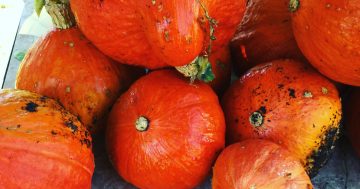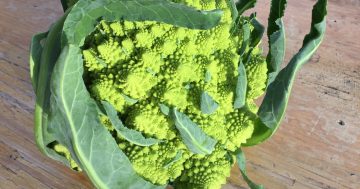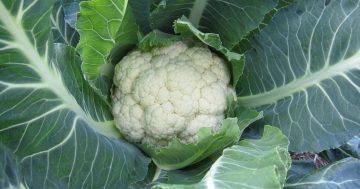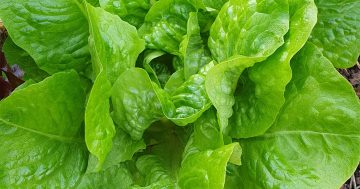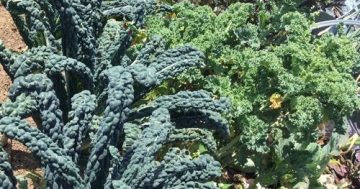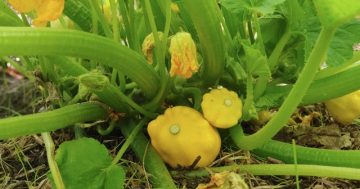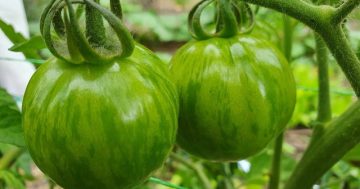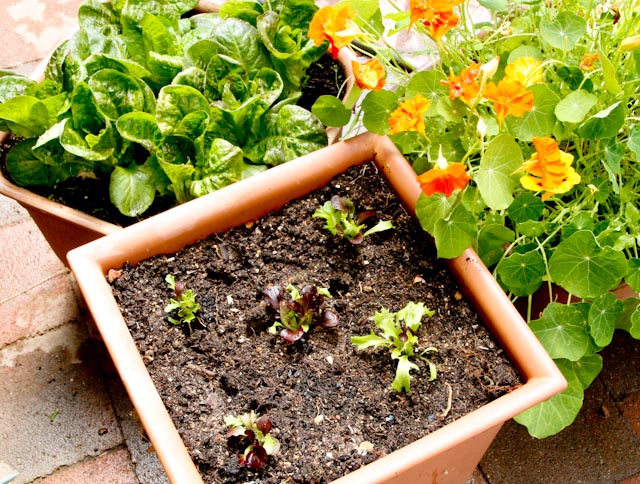
Lettuce is easily grown from seedlings. Photos: Joyce Wilkie.
Waiting in line at any hardware or gardening store this week and taking a nosey peek into other people’s trolleys tells you the whole November gardening story.
Car boots are filling with bags of potting mix, fertiliser, pots, plants, seedlings and packets of seed. Late spring punches out at drought. The warming soil can still use little bits of rain and emanates such feelings of hope that gardeners cannot help themselves no matter what summer may have in store.
In the kitchen garden, the worklist is long: tomatoes, zucchinis, beans, pumpkins, corn, cucumbers, melons, in fact, all the heat-loving, frost-tender fruiting plants demand attention.
Yes, go mad, and fill every corner of your kitchen garden with fast-growing, productive annuals but if you are busy, want to look after your back or are just starting out as a food grower, please hold back. Winter bounty can only be enjoyed and summer overload avoided if you leave space now for planting next month. Winter harvest starts in summer, not in winter.
November is work but meagre, delicious pickings. Italians make pasta primavera (spring pasta) simple, fresh, green. Olive oil, broad beans, peas, asparagus, fresh garlic, herbs and, of course, a bowl of salad.
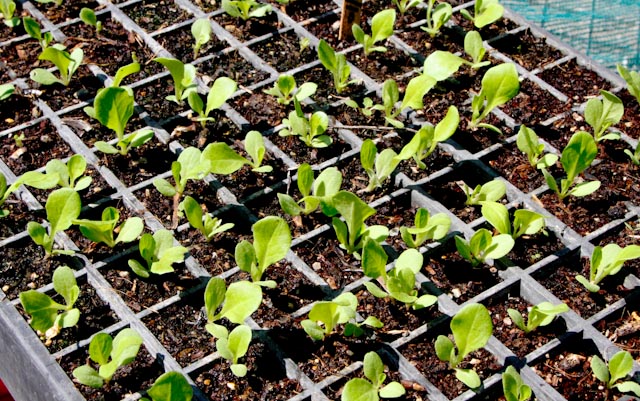
Lettuce grows easily in spring but is harder to propagate from seed in summer.
It is this bowl of salad that tends to get ignored in the planting schedule right now, but in the hot days of summer, it is so important. A few leaves in a sandwich, a refreshing treat alongside the barbecue.
Lettuce gets forgotten in spring because it almost grows by itself. I have lettuces popping out of the ground like a weed. In summer, when all you really feel like is a crisp, succulent, sweet bowl of salad, it can be hard to find.
There are two problems with growing good lettuce year-round. First, to stay sweet and crunchy, it needs to grow fast and that means lots of water. Grow it under shade cloth with mulch or put it in a pot where there is half shade.
Second, plant small amounts often. Unlike so many of the summer vegetables, which only need once yearly plantings, the smaller vegetables like lettuce have to be planted frequently.
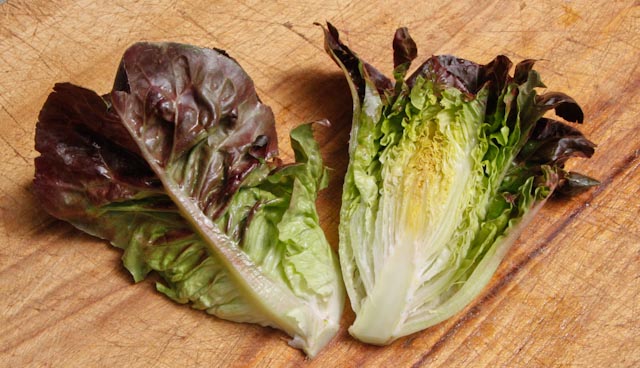
Freshly picked lettuce is a garden treat.
Lettuce seed is also really quirky. Yes, it appears weed-like in spring but that is because it likes to germinate when there are warm days and a little tickle of frost overnight.
Once summer arrives many varieties exhibit ‘thermodormancy’. They will not germinate when it’s hot (they also don’t like to germinate in the dark). I have done all sorts of things to cheat this fact of nature including storing seeds in the fridge, germinating trays on my bathroom floor but nature beat me. Thankfully, scientists have figured out ways to break thermodormancy and ‘prime’ seeds. No panic, the seed is simply soaked in water then dried. Easy for big companies, not so easy at home.
So lettuces are one vegetable I would recommend buying as seedlings. Plant one punnet a month in the garden or in a pot and you will enjoy freshly picked salads year-round.
What I’m Picking:
- Asparagus
- Broadbeans
- Cherries
- Chinese greens
- English spinach
- Green garlic & scapes
- Globe artichokes
- Peas
- Rhubarb
- Spring onions
- Salad greens.
Seeds I’m Planting:
- Basil
- Beans
- Beetroot
- Brussel Sprouts
- Cabbage, Red & Savoy
- Celeriac
- Celery
- Coriander
- Cucumbers
- Endive & Radicchio
- Leeks
- Lettuce–Cos, Salad Bowl iceberg
- Mesclun Salad Mix
- Parsnips
- Potatoes
- Pumpkins
- Radish
- Rocket
- Silverbeet
- Spring Onions
- Zucchini & other summer squash
- Sweetcorn.
Joyce Wilkie has farmed vegetables and free-range poultry at Allsun Farm, Gundaroo for decades. Educating people about where their food comes from and teaching them how to grow it is her abiding passion.












